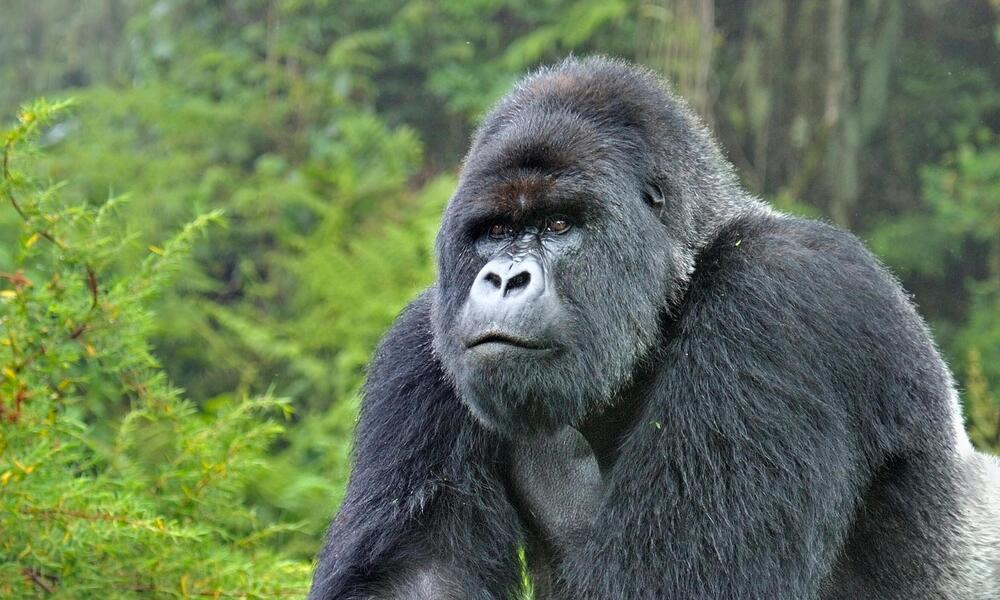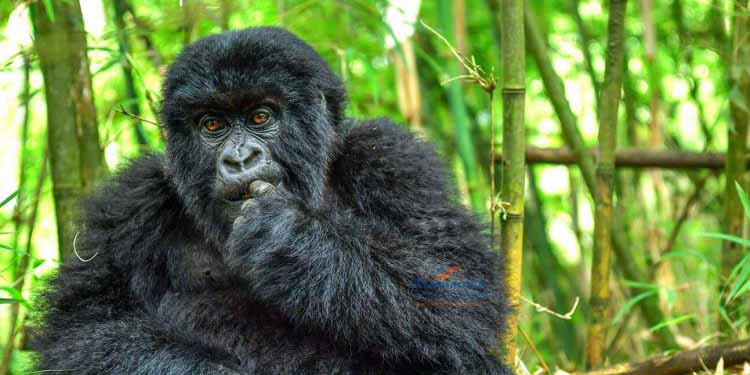How Much Space Does A Gorilla Family Occupy in the Forest?
Mountain gorilla Natural habitats (the mountainous rainforests) are large, and this makes many travelers wonder; how much space does a gorilla family occupy in the forest? It will interest you to know that these Giant Apes don’t occupy separate territories, in addition to not defending these territories against individuals of the same species. Rather, they freely roam in their home ranges.
In cases where food sources are widely distributed in the gorilla’s natural habitats, these Great Apes tend to have larger home ranges. If there are abundant nutritious and high-quality food plants in the natural habitats of gorillas, there will also be a considerably shorter distance between the feeding sites. The more individuals in the gorilla family, the further they have to move/roam, as well as the bigger their home range will be.
Gorilla home ranges are usually characterized by different vegetation zones, which are occasionally utilized. These Giant Apes are known for occupying areas between four and eight square kilometers, and if the area is less fertile, they are likely to cover up to thirty square kilometers. In most cases, the home ranges of different gorilla families will overlap, with cases of gorilla home ranges being inside the other gorilla families’ home ranges.

Mountain Gorilla
It is a common scenario for gorilla families to move an average of 500 meters to 1 kilometer in a single day to search for food, and this can even be more depending on the availability of food. Sometimes, these Giant Apes will move too far distances to find certain tree species with particularly their favorite food/fruits. You will notice that some gorilla families take longer while others a shorter time to find, depending on how far they have moved to find food.
How long it takes to find a gorilla family
Past experiences have shown that food availability is one of the biggest determinants of how far the gorilla family moves, and in the end, affects the overall gorilla trekking time. It will take you anywhere between one hour and 6 hours, sometimes even more to finally find a habituated gorilla family. Besides food availability, other factors that determine the overall trekking time include the nature of the terrains (whether rugged, too steep, or gentle), the pace of the slowest person in your group, and the nature of vegetation (dense or sparse).
It is always important to be prepared for anything by carrying enough drinking water and energy-giving snacks, hiring a porter to offer support or carry your backpack and camera equipment while trekking, wearing sturdy and comfortable hiking boots, long-sleeved shirts, safari pants, and gardening gloves. Given the fact that you will be walking through a forest filled with different insects, you might need to apply insect repellant as well.

Gorilla Trekking
When is the best month to trek the mountain gorillas?
The mountain gorillas can trek throughout the year. However, different months offer varying trekking challenges and sometimes experiences. If you trek in the dry months-January, February, June, July, August, September, and December, you will be walking through relatively drier forest trails, owing to the reduced precipitation levels.
If you trek in the wet months- March, April, May, October, and November, expect wet, muddier, and slippery forest trails because of the increased precipitation levels. However, the mountain gorilla natural habitats (Bwindi Impenetrable and Mgahinga Gorilla National Parks in Uganda, Volcanoes National Park in Rwanda, and Virunga National Park in the Democratic Republic of Congo) are generally rainforests and mountainous. This means that what you expect to be a traditional dry month will surprisingly be marked by rain. For this reason, it is important to be prepared for anything- rain or no rain.
